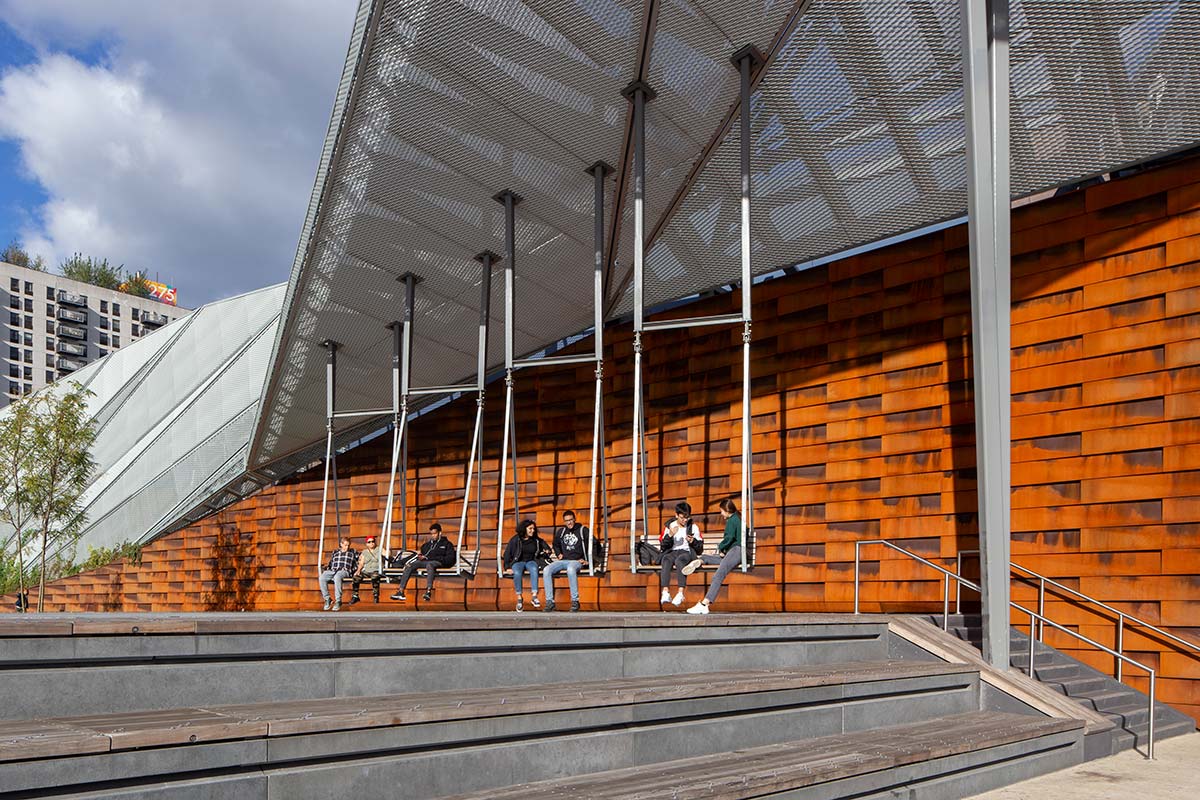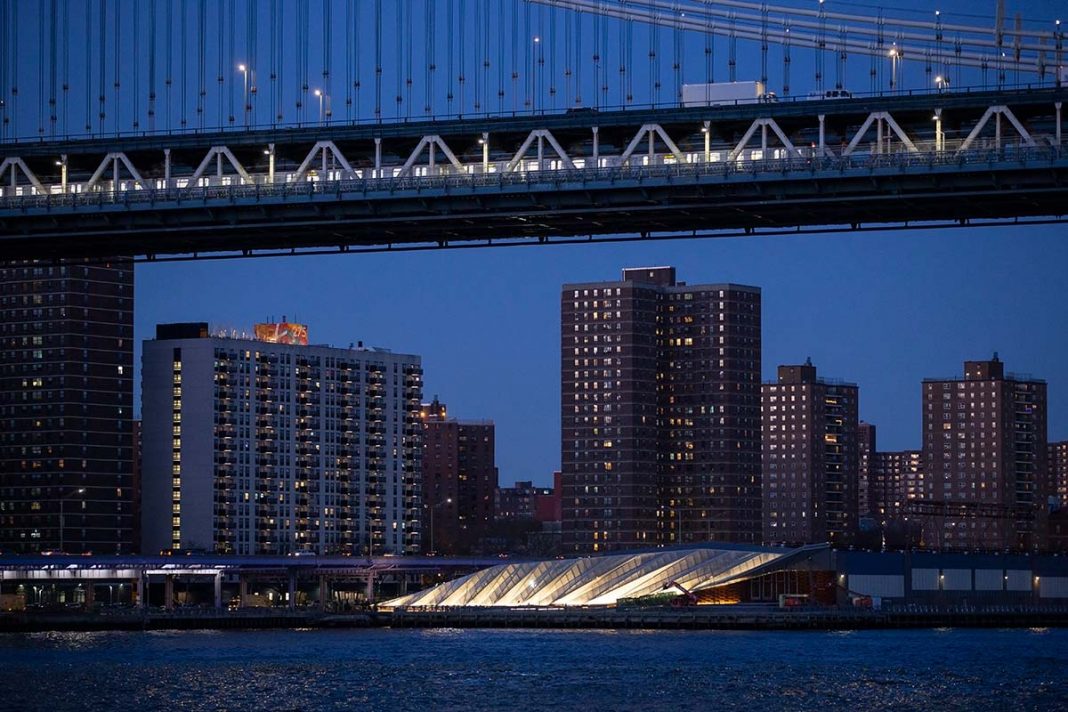DATA SHEET
Client: New York City Economic Development Corporation (NYCEDC)
Architects: SHoP Architects, Ken Smith Workshop
From Tribeca to the Upper West Side, Brooklyn to Queens, every year New York unveils new restyling of its piers, transformed into true outdoor oases on the Hudson or the East River. These conversions have radically altered the face of the city, offering large green areas along the riverbanks. With bicycle paths, outdoor cinemas and theaters on the water.
The latest such project to open, on the Lower East Side of Manhattan, is Pier 35, a ‘dynamic’ structure with big swings that seem to float in the void. Designed by SHoP Architects and Ken Smith Workshop, commissioned by the New York City Economic Development Corporation (NYCEDC), Pier 35 is an innovative, futuristic scenario: an eco-park on the East River, connected to a new urban beach for New Yorkers.
“The creation of this unapologetically urban landscape – says Cathy E. Jones, director of the Pier 35 project – was truly a collaborative effort with the city, the design team, the construction management team and their consultants, and the community,” project director Cathy E. Jones said in a statement. “The new eco-park provides the passive recreation space requested by the local residents, as well as the vertical visual effect of the vine wall that acts as a green billboard to the city.”
With an accordion design that produces an undulated landscape, the architects have invented a series of walkways crossing meadows and dunes. A sloping wall entirely clad in plants and shrubs represents a true green screen that extends to the next pier – Pier 36 – below which the restrooms have been concealed.


The choice of using vivid materials like the metal for the screen and the steel of the panels links back to the history of the East River as a place of trade and shipping. A bond with the past that has also been shifted into the ecological prototype of Mussel Beach, an urban beach that replicates the local habitat, with a particular focus on mussels, through inclined surfaces in concrete and rocks placed in the tidal area. A contemporary oasis from which to admire the majestic beauty of the Brooklyn Bridge.












